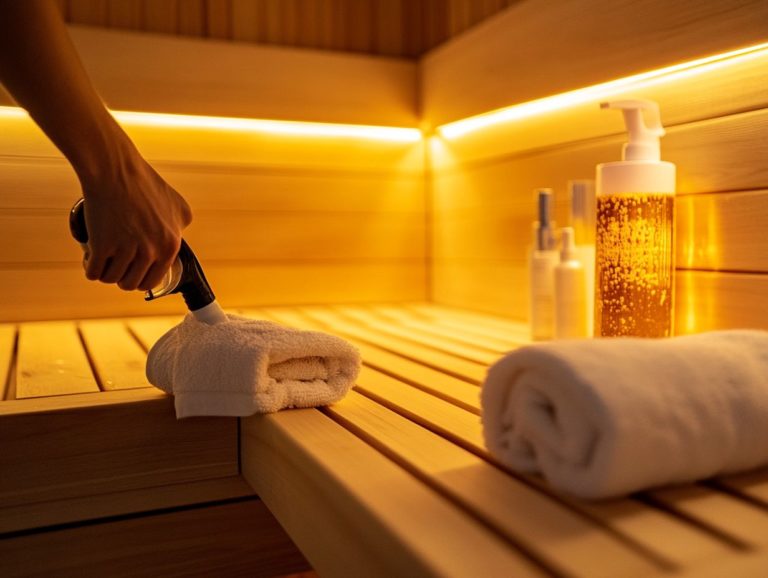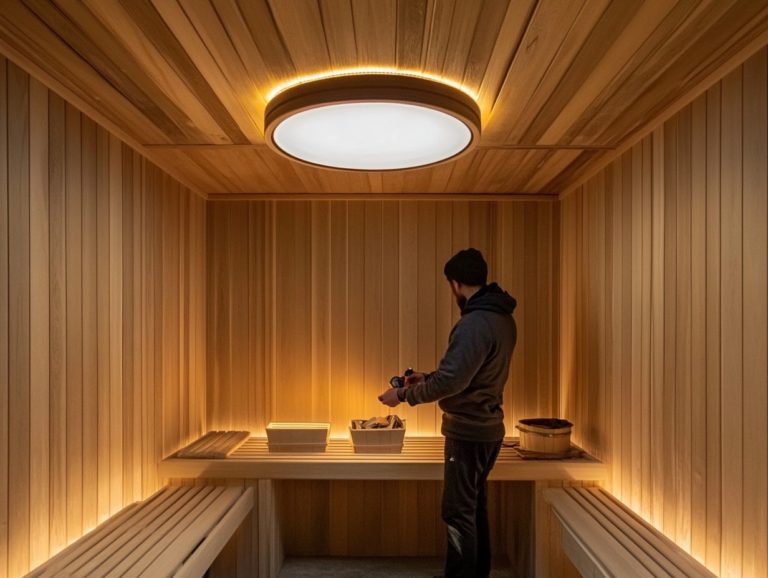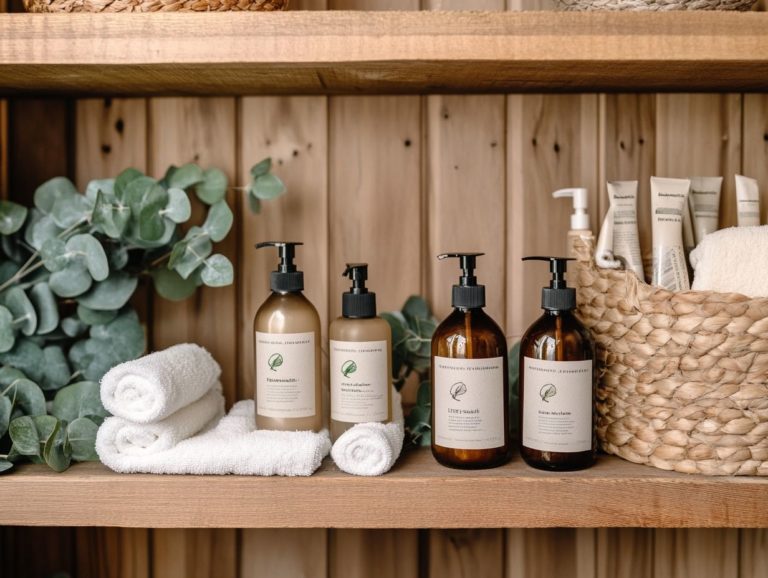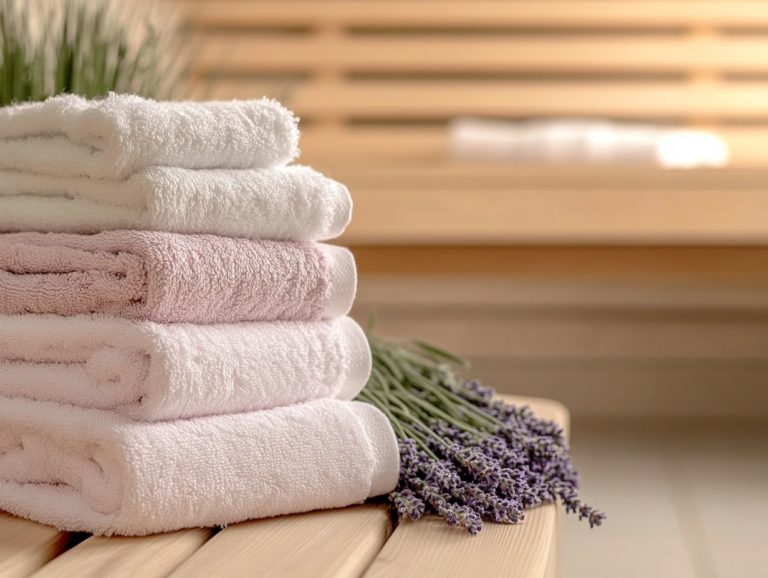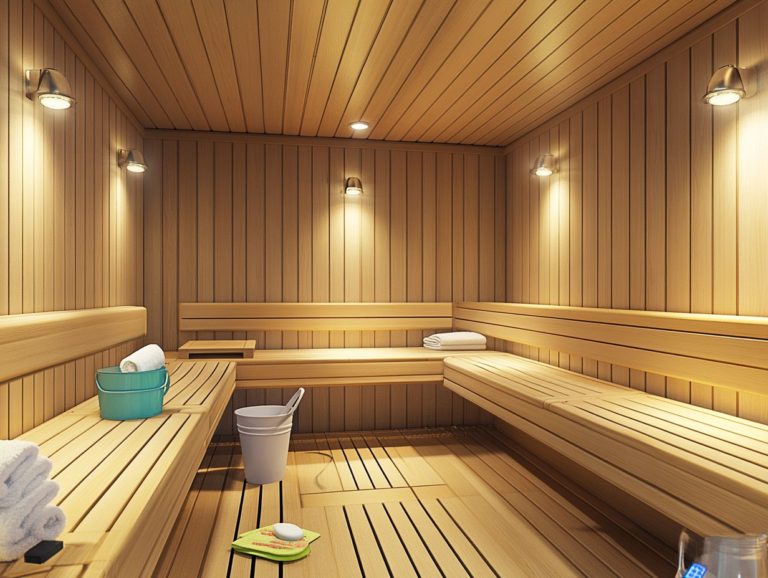Humidity Control in Sauna: Essential Tips
Humidity control is a crucial yet often overlooked aspect of enjoying and maximizing the effectiveness of your sauna experience. Imagine stepping into a sauna where every breath relaxes you deeper. Proper humidity makes this dream a reality.
The right humidity levels can significantly enhance your relaxation and influence the health benefits you receive, making a world of difference in how you feel during and after your sessions. This article delves into the reasons why humidity matters, the effects of varying levels, and practical methods for maintaining that perfect balance.
Whether you re a sauna novice or a seasoned user, you ll discover essential tips that will elevate your experience. Dive in now to uncover how to create your ideal sauna environment!
Contents
- Key Takeaways:
- The Importance of Humidity Control in Sauna
- Effects of High and Low Humidity in Saunas
- Methods for Controlling Humidity in Saunas
- Tips for Maintaining Optimal Humidity Levels
- Frequently Asked Questions
- What is humidity control in sauna and why is it important?
- What is the ideal humidity level for a sauna?
- What are some essential tips for controlling humidity in a sauna?
- Can high humidity in a sauna be harmful?
- How can I prevent excessive humidity in my sauna?
- What are the benefits of controlling humidity in a sauna?
Key Takeaways:

- Proper humidity control is crucial for optimal performance and experience in a sauna.
- Both high and low humidity levels can have negative effects on the sauna experience, from discomfort to potential health risks.
- Utilizing proper equipment and techniques, as well as following best practices, can help maintain optimal humidity levels in the sauna for a more enjoyable experience.
The Importance of Humidity Control in Sauna
Humidity control in a sauna is essential for elevating your sauna experience to a whole new level. By optimizing humidity, you enhance the health benefits and overall effectiveness of various sauna types, whether it s the traditional Finnish sauna, the steam sauna, or the infrared sauna.
Proper humidity fosters relaxation and stimulates better blood circulation. It also aids in detoxification by allowing your body to sweat efficiently, helping eliminate toxins and providing relief from joint and muscle pain. By maintaining ideal humidity levels, you can ensure a safe and enjoyable sauna session, getting the most health benefits the sauna environment has to offer.
Why Humidity Matters for Sauna Performance
Humidity plays a pivotal role in your sauna experience, impacting both your comfort and the overall effectiveness of your session, especially in steam saunas. In these settings, higher humidity can create a soothing ambiance that enhances relaxation, but if not managed correctly, it can lead to discomfort.
That’s where proper ventilation comes into play; it s essential for maintaining air circulation and regulating moisture levels, allowing you to reap the therapeutic benefits without feeling overwhelmed. Different types of saunas, whether infrared or traditional dry, come with their own humidity levels, each providing unique health benefits.
By understanding these nuances, you can customize your sauna experience to ensure optimal enjoyment and relaxation.
Effects of High and Low Humidity in Saunas
The effects of high and low humidity in saunas can profoundly influence your sauna experience, shaping both your comfort and health. When humidity levels are off, you may find yourself either drenched in uncomfortable sweat or lacking the essential detoxification benefits you seek.
Maintaining the right balance is key for an enjoyable and beneficial sauna session.
How Humidity Levels Affect Sauna Experience
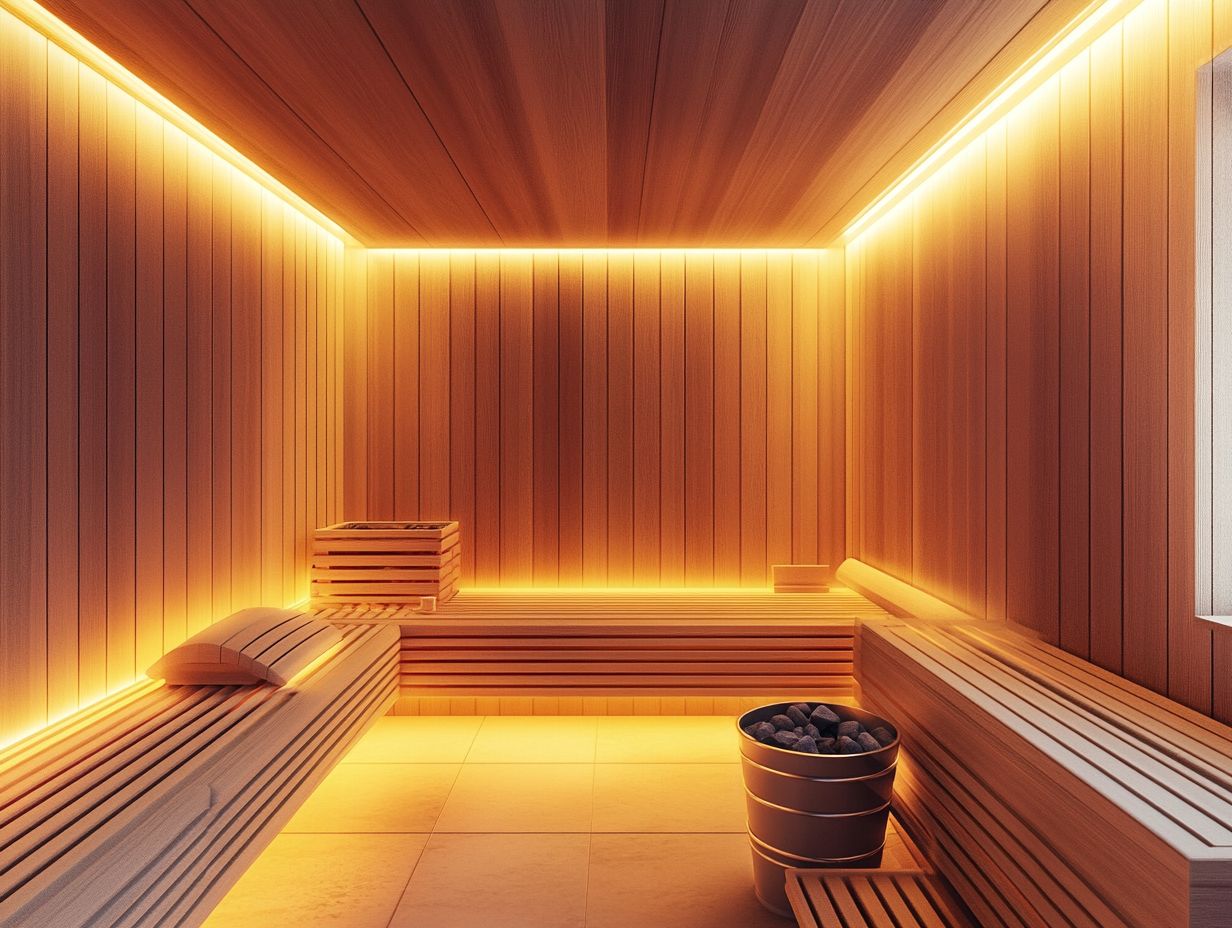
Humidity levels have a direct impact on your sauna experience, shaping how much you sweat and your overall sense of relaxation during each session. When humidity is perfectly balanced, it enhances the soothing and detoxifying effects of the sauna, making you feel more at ease while you sweat it out.
On the flip side, if the humidity is too high or too low, you might struggle to maintain a comfortable body temperature, which can lead to discomfort and diminish your overall enjoyment. The delicate balance between humidity and temperature control plays a crucial role in determining your satisfaction.
An optimal environment fosters deeper muscle relaxation and a more gratifying sense of well-being. Understanding this relationship is key to maximizing the benefits of your sauna visits.
Methods for Controlling Humidity in Saunas
You have a variety of methods at your disposal for managing humidity in your sauna. This ensures that you create the ideal environment for relaxation and health benefits.
Whether you choose to utilize sauna rocks to generate steam or implement ventilation systems to regulate moisture levels, you can tailor the experience to your preferences.
Equipment and Techniques for Adjusting Humidity
To effectively adjust humidity in your sauna, you need the right equipment and techniques. Using sauna rocks and distilled water is key to creating perfect steam.
When you place heated rocks in the sauna stove, pour distilled water over them to generate steam filled with moisture. This enhances the ambiance and supports your respiratory health by creating a soothing environment.
If you prefer a more high-tech approach, consider humidity control systems that monitor and adjust moisture levels continuously. These systems can range from simple to sophisticated, often featuring digital sensors that help manage humidity and automatic sprayers.
Maintaining balanced humidity goes beyond comfort; it significantly boosts muscle relaxation and the detoxification benefits you gain from regular sauna sessions.
Tips for Maintaining Optimal Humidity Levels
Maintaining optimal humidity levels in your sauna is essential for enhancing your overall sauna experience. This involves effective strategies such as regular cleaning, ensuring proper ventilation, and understanding safety measures for humidity control.
By prioritizing these practices, you can truly enhance the benefits and enjoyment of your sauna sessions!
Best Practices for Humidity Control
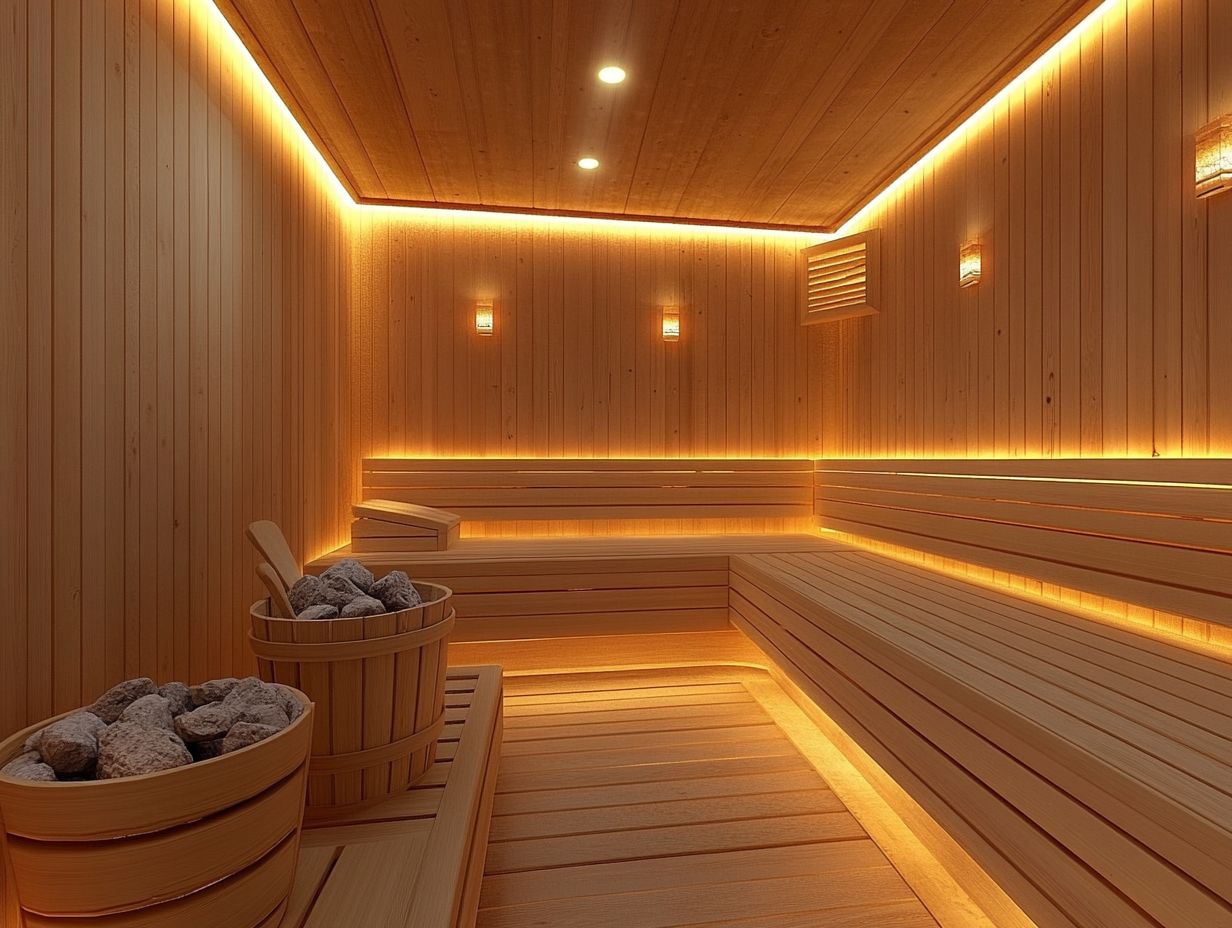
Implementing best practices for humidity control in your sauna room is vital for maximizing health benefits. It also ensures a comfortable and safe environment for your enjoyment.
By regularly monitoring and adjusting humidity levels, you can optimize your sauna experience. This holds true whether you’re indulging in a traditional steam sauna or embracing the modern infrared model.
Proper ventilation is key to maintaining the ideal moisture balance. Familiarize yourself with your sauna’s specific requirements and tailor your usage accordingly.
Establishing a consistent maintenance routine, like cleaning and inspecting humidity sensors, can enhance your comfort and reduce potential health risks linked to excess moisture. Understanding how environmental conditions impact humidity helps create the most enjoyable and therapeutic atmosphere, amplifying your relaxation and wellness benefits.
Frequently Asked Questions
What is humidity control in sauna and why is it important?
Humidity control in a sauna refers to managing moisture levels in the sauna room. It is important because it affects the overall experience and can impact the health and safety of sauna users.
What is the ideal humidity level for a sauna?
The ideal humidity level for a sauna is between 10% and 20%. This range ensures a comfortable and enjoyable experience without causing discomfort or health risks.
What are some essential tips for controlling humidity in a sauna?
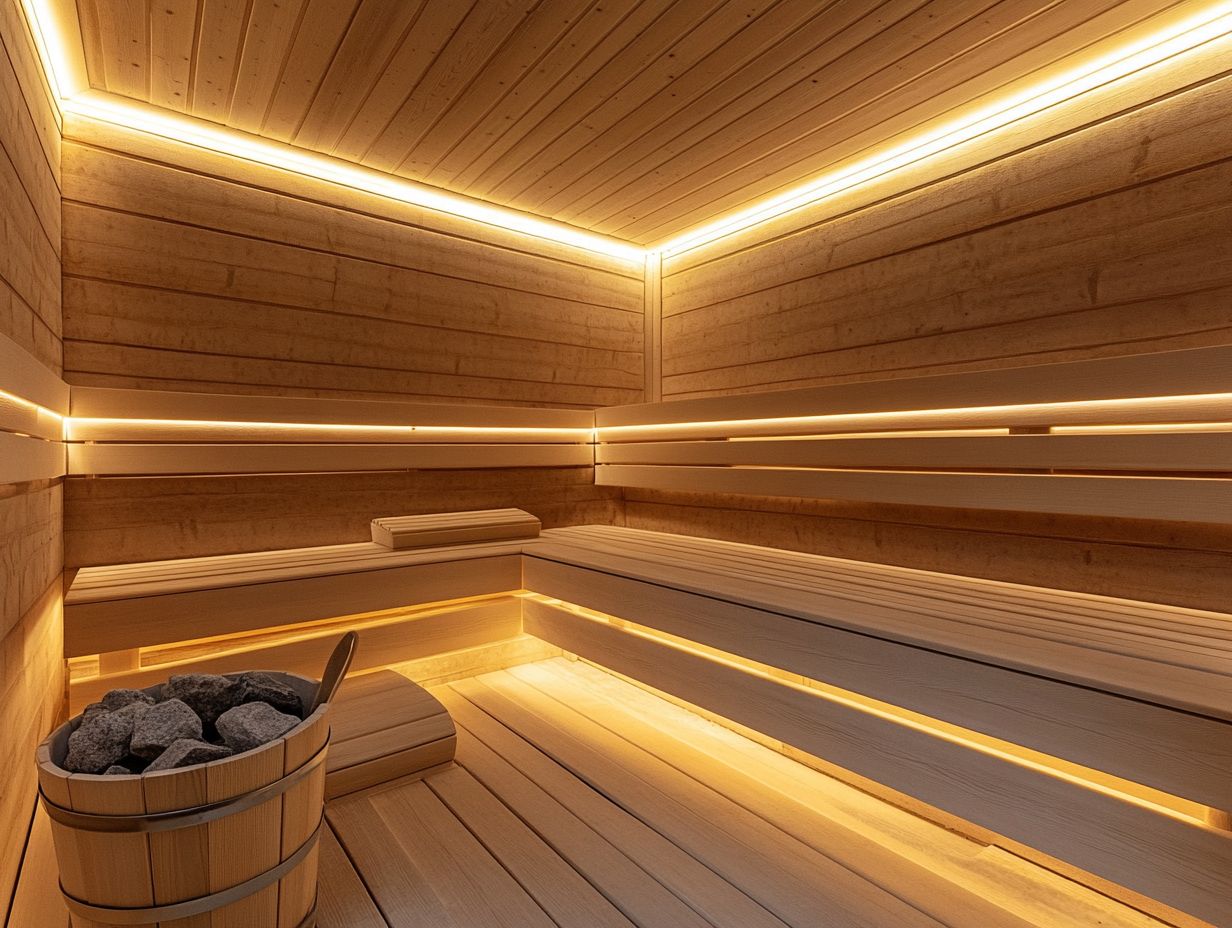
Some essential tips for controlling humidity in a sauna include using proper ventilation, avoiding excessive water usage, and maintaining a consistent temperature. Regularly cleaning and maintaining the sauna is also vital to prevent mold and bacteria growth.
Can high humidity in a sauna be harmful?
Yes, high humidity in a sauna can be harmful. It can lead to discomfort, difficulty breathing, and increased risks of heat exhaustion or heat stroke. High humidity can also create an ideal environment for bacteria and mold to grow.
Ready to transform your sauna experience? Act now to implement these humidity control tips for the best relaxation experience!
How can I prevent excessive humidity in my sauna?
To prevent excessive humidity in your sauna, ventilate the room properly. Avoid adding too much water. Consider using a hygrometer, which is a device that measures humidity, to keep track of the levels.
What are the benefits of controlling humidity in a sauna?
Controlling humidity in a sauna offers several advantages. It creates a more comfortable experience and lowers the risk of health issues while protecting the sauna from damage.
Additionally, it improves air quality and stops the growth of bacteria and mold.


